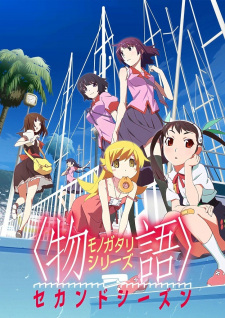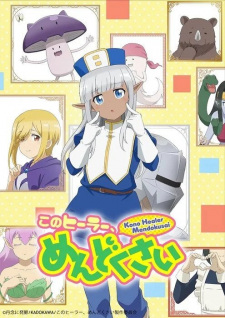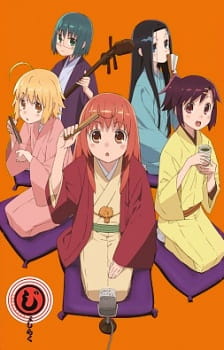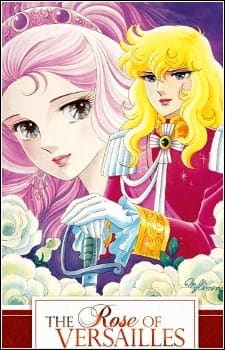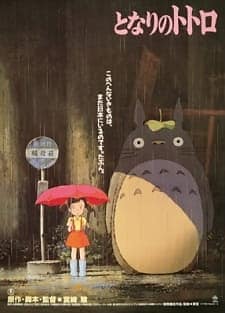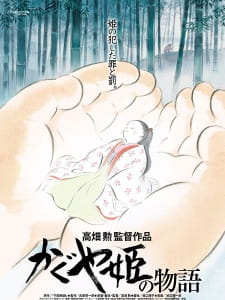Stories.
Everyone wants to hear or tell a story people will remember by. It doesn’t matter if the story is fictional, realistic, sarcastic, humorous, imaginative, mysterious, psychological, speculative, or even twisted as it can be. Stories are created by ideas that are formed from the very thoughts we experience in our lives. In order for stories to be told well, they have to evoke feelings, reactions, and attract audience that appreciates its ideas. Monogatari Second Series - the anime that not only attracted me to its franchise - but also presented it in an extravagant way that takes the art of storytelling to a whole ... new level.
That level of storytelling was already clearly evidenced from its predecessor that achieved international success. Yes, I’m talking about Bakemonogatari that debuted back in 2009. Its success has later spawned other series in the forms of Nisemonogatari, Nekomonogatari: Kuro, and the soon-to-debut Kizumonogatari . Now, it’s back once again as an ongoing story narrative. Monogatari Series: Second Season is an anime adapted from the novel of the same name written by Nisio Isin with artwork by Vofan. If you’re a fan of the previous Monogatari series franchise, then this should be no shadow of a doubt be part of your watch-list as we are told stories at its most definite form.
Similar to what some people might notice in the past, the Monogatari series presents itself in an unique form of storytelling. The term ‘monogatari’ itself defines as literature. For a series based on storytelling to succeed though usually requires a character base with insightful plot, creative setting, descriptive ideas based on connections, and a strong literal sense of execution. Monogatari series plays on most of these concepts but constructs it like an experiment. Whether you dare to take on the experiment might have different experiences. However, there’s no doubt that this series and its franchise has tested their experiment and succeeded in their message. Indeed, the storytelling of Monogatari mixes itself with visual arts and dialogues. The strength of the series comes from its dialogues that creates humor, sense, and might evoke people’s minds to think its true meaning. Most of the time, the meaning of the dialogues are metaphoric and conveys to many ideas. Its usage of word plays presents its unique art style to attract viewers toward its messages. Through these messages, viewers will find out just how exclusive this shows’ storytelling separates itself from most forms of storytelling.
Monogatari Series: Second Season isn’t just about storytelling though. As mentioned before, a strong character cast will attract viewers to almost any form of genre. Luckily, this show has plenty of that starring our Koyomi Araragi, a high school student whose life has changed forever after a certain incident. Obviously, I would assume that you have seen the original Bakemonogatari to understand this but Araragi makes his return in this sequel. He makes his presence well known as other characters in the series speculate him as many things - a lolicon, dangerous, pervert, just to name a few. However, we know that Araragi is a character of loyalty as seen through his relationship with Hitagi Senjougahara. More importantly though, he is also protective towards others including his friends, family, and even strangers. Some of his actions might be interpreted in the wrong way by other characters but the guy definitely has proven many times that he is the type that others can depend on. He seeks to achieve the endings that allows characters live in peace. However, this often puts a burden on himself as Araragi finds that sometimes, he can’t achieve everything alone. This even puts his own lives at risk many times. But hey, he is that type of that guy that takes risks. From a narrative perspective, his actions are often awarded although he doesn’t always takes everything for granted. Instead, he keeps his more of the ‘it’s the right thing to do’ attitude.
Most of the supporting characters from the novels makes their appearances in the story arcs including Tsubasa Hanekawa, Mayoi Hachikuji, Suruga Kanbaru, Nadeko Sengoku, Shinobu Oshino, and Hitagi Senjougahara. All these characters plays their different roles that fulfills some sort of theme or morality to its title. Each of these titles present a different insight on our characters as we see a sort of journey to embark on. And of course, every journey begins with the first step. There’s already trouble in the beginning as we get a hint of supernatural madness going on. To make matters worse, Tsubasa herself finds trouble with her life as sudden changes occurs.
The first story arc initially reintroduces its narrative aspect to get viewers to familiarize themselves the format of how Monogatari works. Its supernatural themes takes on a more gruesome turn later on but there’s also hope and prosperity. As for the other arcs, each of them has a different theme and plot. Some of these arcs also explores the back stories of our supporting characters. Along with that, there’s character interactions that are dynamic with development. Additionally, each arc contains a similar style of storytelling through word plays, visual presentations, and dialogues. As the series contains supernatural elements as well, expect legends to unfold and discoveries to be made. These include spirit apparitions, vampires, mythic cats, and even Gods. The power of its dialogues enhances the experience with the power of its words. It’s an experience you won’t forget especially with some plot twists like one with a snake a girl.
Judging on another level of the series is its humor. The style of Monogatari invokes humor in a sense that is quite peculiar. By peculiar though, I mean it as as a brilliant way because the show likes to experiment. Its stylish dialogues often mixes in parodies of other genres and themes for experimentation. These accompanied with the expressions of our characters creates a lavish theater of animation.
As good as the series sounds, there’s a few aspects I found to be lacking. Namely, there’s perhaps a bit of too much fan service in the beginning that can be distracting. These don’t seem to have any meaning or dynamics and sometimes may distract viewers from the words play and dialogues. Other times, Araragi’s interactions with some of the other characters might even seem a bit creepy or hard to take for granted. This is especially true in one of the later arcs involving Shinobu that takes itself to a rather defiled way with their interactions. More importantly is the fact that the show sometimes likes to get a bit carried away with its conversations. Some of them might even drag on with small talk that can seem to be mundane. Other times, they flash way too fast to be read that can frustrate viewers in attempting to fully understanding its meaning. (if it has one at some occasions) Finally, there are some recap episodes between each story arc that drags the series together. They might help refresh a bit of its previous predecessors but can also be a waste of time for people who wants the series to accelerate itself.
Shaft handles the production of this series. You know what that means right? If extraordinary is a word that just popped into your mind, then you’re on the right track. By that term, Shaft is known to pull out a variety of series over the past year that have impacted the world. Names such as EF: A Fairy Tale of the Two, Arakawa Under the Bridge, Sayonara Zetsubo Sensei, and Puella Magi Madoka Magica are just a few that comes to mind. The artwork of Monogatari is in a sense that can be both visually attractive and descriptive the same time. When not presented as comedy, they hold a deeper meaning or metaphor behind them. Other times, they are connected to the dialogues spoken by the characters to convey their thoughts and feelings. Speaking of characters, most of them are designed in a similar way as their predecessors. Araragi still has that noticeable hair-like antenna sticking out of his head while his girlfriend still retains her haircut. Other characters like Shinobu, Nadeko, and Tsubasa all possesses artistic traits similar to their supernatural counterparts.
Soundtrack wise, the series maintains an eerie like atmosphere. During more of the climatic scenes, the series shifts its gears to a more dramatic tone with explosive entrances and executions. Other times, the series likes to keep its more balanced atmosphere along with comedic vibrations. The soundtrack might not be the most powerful device of the show but its various OP & ED songs makes up this department with its various styles. Almost every arc has a different song accompanied by the voice involving the star of that story. Similar to its word plays, they contain a pattern of artistic visuals to brings out the power of its orchestra. With its cast members also lies in the strength of their voices. Almost every characters demonstrates this with their voice mannerisms. These include the cunning Shinobu (Maaya Sakamoto), the kuudere Senjougahara (Chiwa Saito), innocent Nadeko (Kana Hanazawa), the mature Tsubasa (Yui Horie), the playful sisters of Karen and Tsukihi, and Araragi (Hiroshi Kamiya). Because the narrative aspect of the show is so strong with the dialogues, it is important to characterize each of their voices as a focus in order to bring out their best. And yes, I am grateful that these characters all bought forth their best thanks to the talents of their voice actor/actresses.
So,this anime might not be for everyone. That’s something I’m sure most people have heard about the Monogatari franchise before. But if you pass this up for whatever reason, I still would recommend at least giving the first arc a try. That way, it might refresh a bit of experience of what you get out of the other series. However, I highly recommend watching this series only after you have completed its previous predecessors to gain full experience of its presentation. The Monogatari franchise has already achieved universal success thanks to its unique narrative, powerful dialogues, artistic word plays, and unique characters. Its humor will knock you out with high doses of laughter accompanied by its strange twist of stories. It even has bits of action too so violence is not out of the question there for fans looking for some intensity. (that and maybe its goal of achieving anemia with its fan service.) But all in all, Monogatarai series definitely took on the storytelling concept like never before creating an enjoyable experience. Now that is the ecstasy of success.
Alternative Titles Synonyms: Nekomonogatari: Shiro, Kabukimonogatari, Otorimonogatari, Onimonogatari, Koimonogatari Japanese: 〈物語〉シリーズ セカンドシーズン Information Type: TV Episodes: 26 Status: Finished Airing Aired: Jul 7, 2013 to Dec 29, 2013 Premiered: Summer 2013 Broadcast: Sundays at 00:00 (JST) Licensors: Aniplex of America Studios: Shaft Source: Light novel Theme: Vampire Duration: 25 min. per ep. Rating: R - 17+ (violence & profanity) Statistics Score: 8.761 (scored by 357,291 users) 1 indicates a . Ranked: #432 2 based on the top anime page. Please note that 'Not yet aired' and 'R18+' titles are excluded. Popularity: #305 Members: 669,025 Favorites: 23,435 Available AtResources |
|
